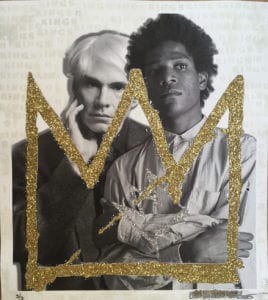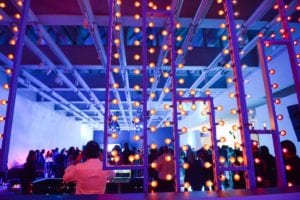Raised in Kentucky, artist Mark Dorf now lives and works in Brooklyn. Well known for his beautiful and intelligent combinations of landscape and technology, Dorf creates irresistible scenes that absolutely capture the imagination. Mark Dorf is the kind of person you immediately want to be friends with. It also just so happens that he is the artist whose beautiful digital compositions you immediately want on your walls.
Art Zealous met him at his studio in his apartment in Bushwick.
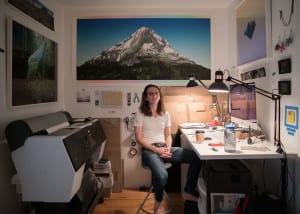
AZ: You were raised in Kentucky – How did you end up in New York?
MD: I always knew I wanted to be here eventually – there is, of course, such a strong creative community here, which is so important. Through these communities you create and help sustain support systems. Upon leaving university I didn’t really have the money to live here, so I lived up in the Hudson Valley for a year working in a furniture shop as a welder and a woodworker – lived in the mountains for a while and focused on making work. It got to the point where I was coming to the city 3 or 4 times a month and between the time and money that was involved with that I just decided to take the dive and move down here. I’ve been here for almost 4 years.
I had that classic question: ‘shit I spent 4 years studying art, what do I do?’ And I said well, I’ll go to a place that allows me to make work which I think is so important to think about – you really need to create and place yourself in an environment that is conducive to your creativity. If I had moved to New York City right out of university, I very well could have drowned, and I probably wouldn’t be on the path that I am now because I needed an affordable place to live that provided a landscape for me to work in.
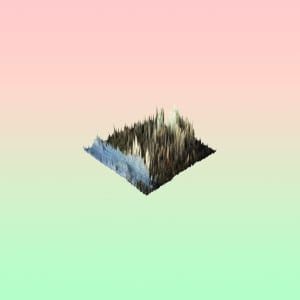
AZ: The two bodies of work we’re focusing on ‘Path’ and ‘Emergence’ – how did you come about mixing photography with the digital creations that you have placed in the images?
MD: I became interested in mixing photography and other digital media for a handful of reasons. For one, digital photography falls under the umbrella that is digital media, so then why restrict yourself to using this medium in only a photographic way. Why not use the tool box in front of you to it’s fullest extent and see what you can make with it. So initially it was very much a curiosity of what I could do with the tools I had available to me.
Something that has interested me throughout my life has been technology and science – of which digital media seemed to be the perfect medium for me to explore these ideas in my work. From there it was a very natural progression. That being said I use quite a lot of different kinds of software in the creation of my works, but it is rare that I actually use tech – the “techiest” I’ve gotten was the use of primitive 3D scanning technology with infrared sensors.

AZ: You must be aware that your work is very aesthetically pleasing to the eye, is that deliberate or does that come with the territory?
MD: One area that I do focus on in my work is the sublime landscape, so I do want to work with seduction in a sense. However additionally to that, in my work, I always try to create a handful of different entry points. Sometimes conceptual art can be incredibly isolating and alienating for someone who hasn’t studied art or is familiar with the history of art – I want to have this level of concept present in the works, but also a level of beauty that might invite a viewer in that would otherwise not seek out these kinds of works.

AZ: It’s interesting that the landscapes you photograph on their own are beautiful, but then you’ve manipulated them in a way that completely maintains that level of beauty by adding something that is totally otherworldly in terms of the way it’s been created
MD: It’s really important to me – I’m a bit tired of these narratives that paint a portrait of the future where technology has taken over, and big brother is watching everyone with the precision of a hawks eye. I won’t say that I disagree with a lot of that stuff, however – I think surveillance and privacy or of course huge issues that certainly need to be addressed and that the consumer and citizen should stay vocal and let the powers that be know that these are important issues of the present day. But conversely, I also think it’s important now to figure out how we can create harmony with technology. Why can’t we use creative platforms to create portraits of the future and technology that are harmonious and cautionary at the same time? If we can achieve this on a creative platform, it will be easier for society as a whole to envision and work towards that better future. We fill our heads with such apocalyptic narratives – through that consumption of fiction we can see nothing else for our future but doom and gloom. We need not see technology as a binary but as an extension of our material existence. There’s no difference between this world and the digital world; they exist in the same circle, and one is derivative of the other.
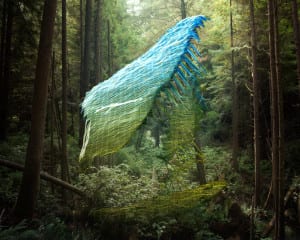
AZ: The 3D scans that you introduce to the photographs – do you see them as singular entities or do you see that they react to the environment that they’re in as a whole piece?
MD: Certainly that they work in harmony with the whole piece. The 3D scans are raw un-manipulated data that are incorporated. The 3D scan element in that piece (Path – untitled 20) was a scan of a stone that was found in the scene that was photographed. The reason why it isn’t so recognizable as a stone is that typically when you see a fully rendered 3D scan, it is a composite of multiple high-resolution scans that have then been further refined. This is but a single scan from a single perspective. So this 3D mesh is a sort of third alternative eye on the scene. There’s the human eye that’s looking, there’s the lens of the camera that is looking, and there’s the technological eye of the infrared scan. All three ‘look’ completely differently so it’s the same subject matter but completely different permutation which touches on another major theme in my work which is language – visual language but also the language of different tools and technology. Each of these languages absorbs and describes very specifically and thus function completely differently. Through communication between these languages, though, we can better understand our world.
You can find Mark’s work online on his website and at Postmasters Gallery in NYC. Additionally, Mark will be publishing a monograph featuring both of these series this fall with Aint–Bad.

